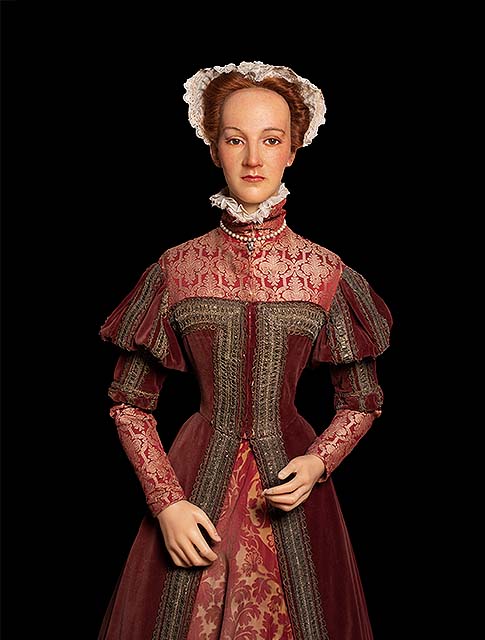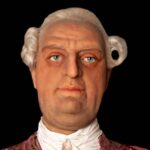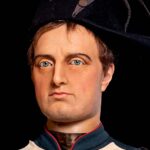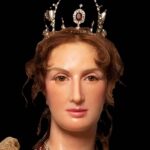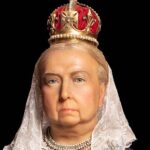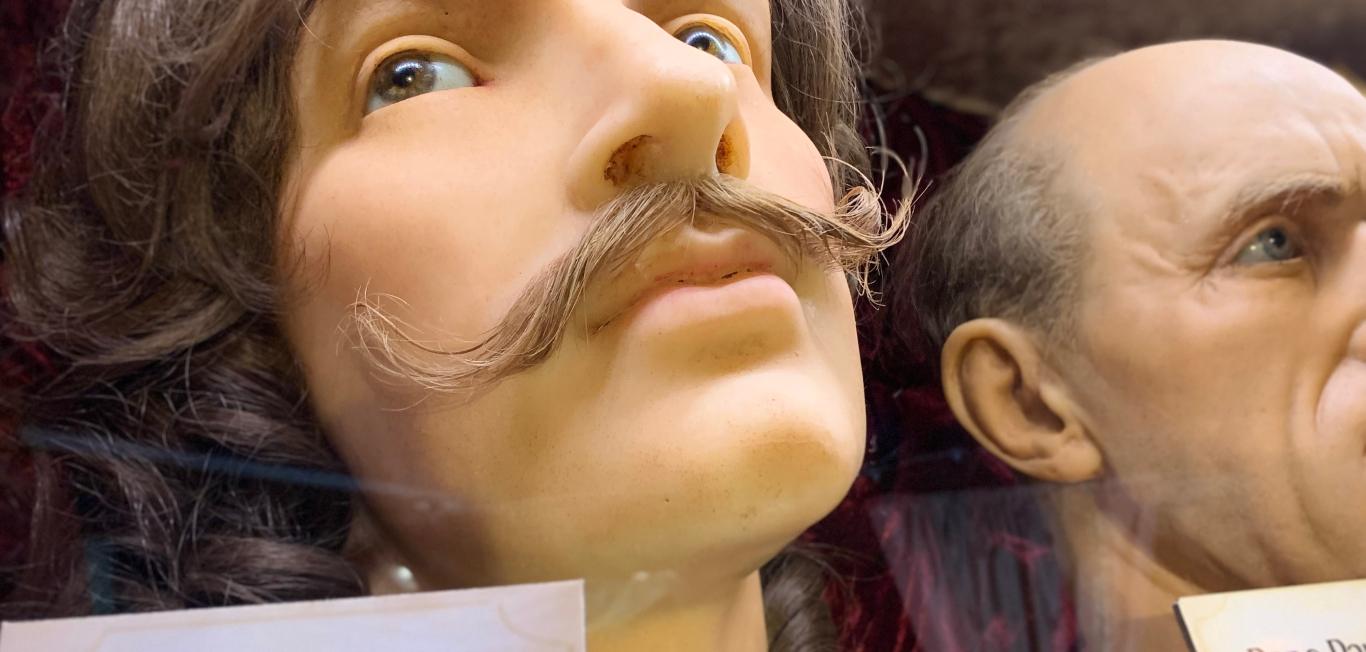Mary, Queen of Scots’, Biography
Mary, Queen of Scots, is a renowned figure in Scottish royal history. She was born on December 8, 1542, just six days before the premature death of her father, King James V of Scotland. This unfortunate event led to her ascension to the throne at nine months. Her upbringing was characterized by strategic political arrangements, including an initial proposal for her to marry Prince Edward, the son of England’s King Henry VIII. However, events shifted when she was sent to France in 1548 to wed the dauphin, the young heir to the French throne. This alliance aimed to strengthen Catholic influence in Protestant England.
In 1560, tragedy struck when the dauphin, still in his teens, passed away, leaving Mary a beautiful yet reluctant widow. She returned to Scotland, a country experiencing religious unrest between Catholics and Protestants. Her reign was turbulent, entangled in these religious conflicts and political power struggles with England.
The clash between Catholic and Protestant factions characterized Mary’s rule. Despite her efforts to navigate the challenging environment, she was eventually forced to abdicate the throne in 1567. Subsequently, she faced over 18 years of imprisonment by Elizabeth I of England. Her life took a harrowing turn when she was eventually executed in 1587, an event that resonated through history as a poignant conclusion to a chaotic and tragic reign.
Mary, Queen of Scots’, story was about ambition, political strategy, and the brutal realities of power dynamics in deeply divided religious and political climates. Her life and reign continue to intrigue historians and the public, offering a compelling narrative of a queen caught in the crossfire of history, facing immense challenges and ultimately meeting a tragic fate. Her legacy endures as that of a prominent figure in records of Scottish and British history, representing the complexities and struggles of a bygone era.
DID YOU KNOW?
The clash between Catholic and Protestant factions characterized Mary's rule.
Early Years of Mary, Queen of Scots
The early life of Mary, Queen of Scots, was a combination of intrigue and royal arrangements. Born on December 8, 1542, to King James V of Scotland and his French wife, Mary of Guise, she inherited the Scottish throne as an infant, as her father passed away a mere six days after her birth. Her baptism took place at the nearby Church of St. Michael, marking the beginning of a remarkable journey.
Mary’s life was a peculiar course of events. At six months old, the Treaty of Greenwich was signed, which was an agreement that Mary would be betrothed to Prince Edward, the son of King Henry VIII of England. This engagement was short-lived due to religious and political complexities between England and Scotland. Her mother’s French heritage played a pivotal role when the French king, Henry II, proposed that Mary wed his son, Dauphin Francis. This led to her relocation to the French court under the care of her father-in-law, naturally forging a close bond between Mary and Francis.
Under King Henry II’s guidance, Mary received a comprehensive education that encompassed horsemanship, falconry, and needlework. It is said that she mastered several languages, including French, Italian, Latin, Spanish, and Greek, demonstrating proficiency in prose and poetry. Their union was commemorated in 1558, with Mary becoming the queen consort of King Francis II at the age of 16. However, tragedy struck when Francis succumbed to an ear infection in 1560, leaving Mary a widow at the age of 18. With Francis’s younger brother Charles ascending the throne, Mary returned to Scotland nine months after her husband’s untimely demise.
Personal Life and Legacy of Mary, Queen of Scots
Mary, Queen of Scots’, personal life was flawed by intricate relationships and political turmoil. Her first marriage to Francis II of France in 1558 remains covered in uncertainty regarding its consummation due to Francis’ premature death at the age of 16. Following this tragedy, Mary wed her first cousin, Lord Darnley, in 1565, which resulted in the birth of her son, James VI (of Scotland) and I (of England and Ireland). However, their marriage was tumultuous from its inception, and Darnley’s death under suspicious circumstances in 1567 added to the complexity of Mary’s life.
Shortly after Darnley’s death, Mary controversially married James Hepburn, Earl of Bothwell, who was the primary suspect in Darnley’s alleged murder. This union further entangled her in scandal and controversy, fueling political opposition and public disapproval.
Subsequently, after a period of imprisonment by Elizabeth I lasting for 19 long years, Mary’s involvement in correspondence with Anthony Babington, aimed at dethroning Elizabeth, led to her being perceived as a threat by the English queen. This resulted in Mary’s trial, where she was found guilty of treason and sentenced to death in 1586.
Mary’s personal life was a series of turbulent alliances, suspicions, and political affiliations, culminating in her tragic demise. Her relationships and decisions, notably her marriages and subsequent actions, greatly influenced her disorderly reign and ultimately sealed her fate.
DID YOU KNOW?
Mary was found guilty of treason and sentenced to death in 1586.
Interesting Facts About Mary, Queen of Scots
Mary, Queen of Scots, inherited the throne at six days old.
In addition to her reign in Scotland, Mary, Queen of Scots, was also the queen of France.
Although Mary, Queen of Scots, had a formidable claim to the English throne, her cousin Elizabeth I reigned as queen.
Throughout her life, Mary, Queen of Scots, had three marriages.
Mary, Queen of Scots, caused tensions with England.
Notably, Mary, Queen of Scots, stood out for her exceptional height, 5 feet, 11 inches, an uncommon trait for women of her era.
It is said that Mary, Queen of Scots, was fluent in six languages: French, Italian, Latin, Greek, Spanish, and Scots.
Mary, Queen of Scots, had many talents, including playing the lute, poetry, horsemanship, and needlework, among other probable skills.
All three of Mary’s marriages ended with her husband dying.
Mary, Queen of Scots’, reign ended in 1567 due to forced abdication.
Mary, Queen of Scots’, Accomplishments
Royal Lineage: Born in 1542 to King James V of Scotland and Mary of Guise, Mary, Queen of Scots, inherited the throne at a young age following the tragic deaths of her two infant brothers, becoming the queen of Scotland at six days old.
Rough Wooing: By 1543, Mary began experiencing geopolitical tensions that would continue through her early years. This was known as the “Rough Wooing.” Both Protestant England and Catholic France rivaled for control over Scotland through her marriage, making her a crucial pawn in the power struggle between these nations.
French Influence: Sent to France in 1548, Mary was raised in the affluence of the French royal palaces. Her upbringing was enhanced by education, cultural exposure, and fostering close relationships with the French royal family, including Princess Elisabeth. She most likely developed linguistic fluency in French, Italian, Spanish, and Latin, alongside honing skills in needlework, poetry, and musical instruments. Mary also probably embraced outdoor activities, such as riding and hunting in the French countryside, cultivating a diverse skill set and cultural adaptability.
Treaty of Edinburgh: In 1560, Mary’s diplomatic accomplishment was the Treaty of Edinburgh, which saw the withdrawal of French and English troops from Scotland, marking a significant step toward Scottish independence.
Patronage of the Arts: Mary was a renowned patron of the arts, promoting cultural endeavors, including poetry, music, and literature, in her court, contributing to the flourishing of the Scottish Renaissance during her reign.
Establishment of Industries: During her rule, 1542-1567, Mary oversaw the development of industries, such as papermaking and fine linen, and contributed to the economic development of Scotland by promoting trade, economic policies, and industrial development, which were influenced by various factors including local conditions, trade relationships, and the efforts of merchants and entrepreneurs. She also supported the growth of educational institutions and patronized various scholars and intellectuals.
Mary, Queen of Scots’, Rise to Power
Returning to Scotland in August 1561 after her protected upbringing in France, Mary, Queen of Scots, faced the daunting reality of her unpreparedness for the boisterous challenges awaiting her. The refined and cultured environment in which she was raised in the French court left her ill-prepared to navigate the complex political and religious conflicts arising in her home country.
Mary’s claim to the English throne stirred hostility from Queen Elizabeth I. Despite Mary’s strong belief in her English inheritance, Elizabeth refused to recognize her as the legitimate heiress. This denial clashed with Mary’s staunchly royal temperament, wherein she highly valued and upheld her rights to the English throne.
DID YOU KNOW?
Mary's claim to the English throne stirred hostility from Queen Elizabeth I.
Mary, Queen of Scots’, ascension to power was fraught with contention, marked by the clash between her expectations and the harsh political realities she faced. Her return to Scotland initiated a violent chapter in her life as she coped with the intricate web of power struggles and international rivalries that surrounded her claim to the English throne.
Mary, Queen of Scots’, Reign
Mary, Queen of Scots’, reign was a quarrelsome period, marked by numerous challenges upon her return to Scotland in 1561. Unfamiliar with the new political and religious unrest that preoccupied Scotland, Mary was caught in the conflict between Catholic and Protestant sects. Her Catholic faith clashed with the suspicions of Protestant subjects, while her tolerant stance disappointed some Catholics.
Her marriage to Lord Darnley, her distant relative, further exacerbated controversy and dissent. The union quickly became unpleasant, blemished by Darnley’s controversial behaviors of being ambiguous and politically opportunistic. Tragedy struck in 1566, when Darnley, along with Protestant nobles, violently murdered Mary’s secretary, Rizzio, leading to the breakdown of their marriage.
The next year, Darnley died of suspicious causes, which implicated Mary, drawing her closer to James Hepburn, Earl of Bothwell. Their swift marriage after Darnley’s death sparked outrage, leading to public backlash and Mary’s forced abdication in favor of her infant son. Her subsequent imprisonment, escape, and seeking refuge in England resulted in her becoming a political prisoner under the wary eye of her cousin, Queen Elizabeth I. Mary, Queen of Scots’, reign summarized a turbulent chapter marked by political intrigue, controversial alliances, and tragic events that shaped her tumultuous regime.
Death of Mary, Queen of Scots
Mary, Queen of Scots’, death was by execution at Fotheringhay Castle on February 8, 1587, at the age of 44. Before kneeling to place her head on the execution block, she disrobed her black attire, revealing a crimson petticoat, which symbolized martyrdom in the Catholic church. She spoke her final words as she kneeled and laid her head on the chopping block, “In manus tuas, Domine, commend spiritum meum,” which translates to, “Into thy hands, O Lord, I commend my spirit.”
Mary’s execution was not swift, as the executioner’s initial strike landed on the back of her head instead of her neck. It took more than one strike to fully sever her head, marking a gruesome ending to her tumultuous life.
Originally, Mary, Queen of Scots, was buried in Peterborough Cathedral. However, in 1612, her son James VI ordered her exhumation and relocation to the vault of King Henry VII’s Chapel in Westminster Abbey, where she was laid to rest. Her execution remains a disturbing and tragic chapter in the history of the Scottish queen, remembered for its brutality and the complexities that surrounded her life and reign.
FAQs
Why is Mary, Queen of Scots, so famous?
Mary, Queen of Scots, is famous for her royal lineage, marriages, political challenges, conflicts with Elizabeth I, and ultimately her tragic fate of execution.
What happened during Mary, Queen of Scots’, early life?
Mary’s early life was marked by political maneuvering, marriages, and the challenges of ruling in a time of religious and political unrest.
How is Mary, Queen of Scots, related to Queen Elizabeth?
Mary, Queen of Scots, and Queen Elizabeth I were cousins. Their relationship was specifically through their descent from Henry VII of England.
Why did Mary, Queen of Scots, die?
Mary, Queen of Scots, was beheaded on February 8, 1587. She was executed due to her involvement in various plots and conspiracies against her cousin, Queen Elizabeth I of England.
